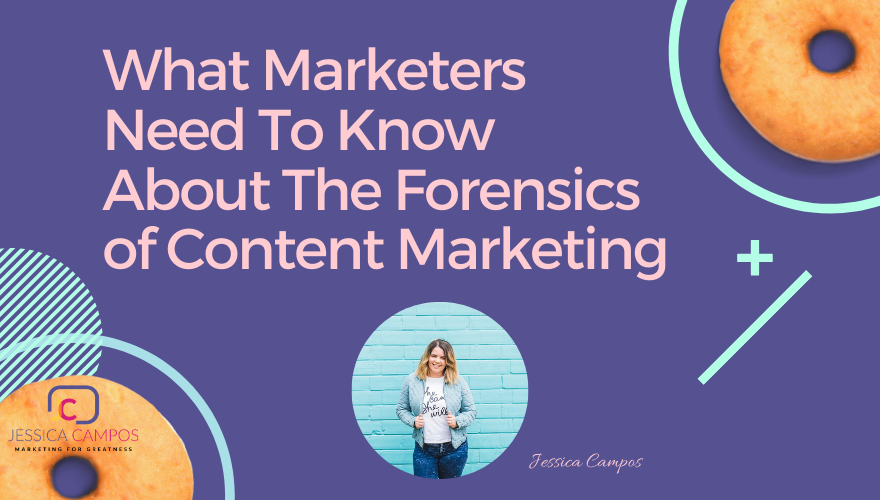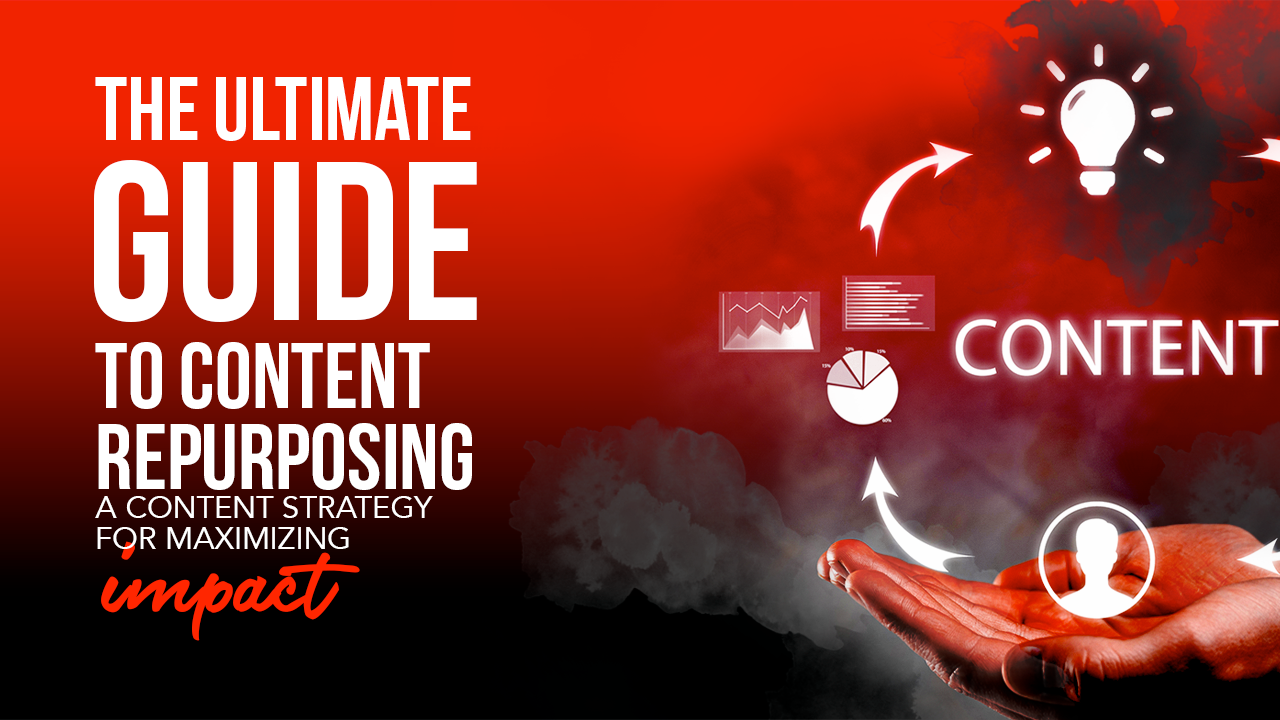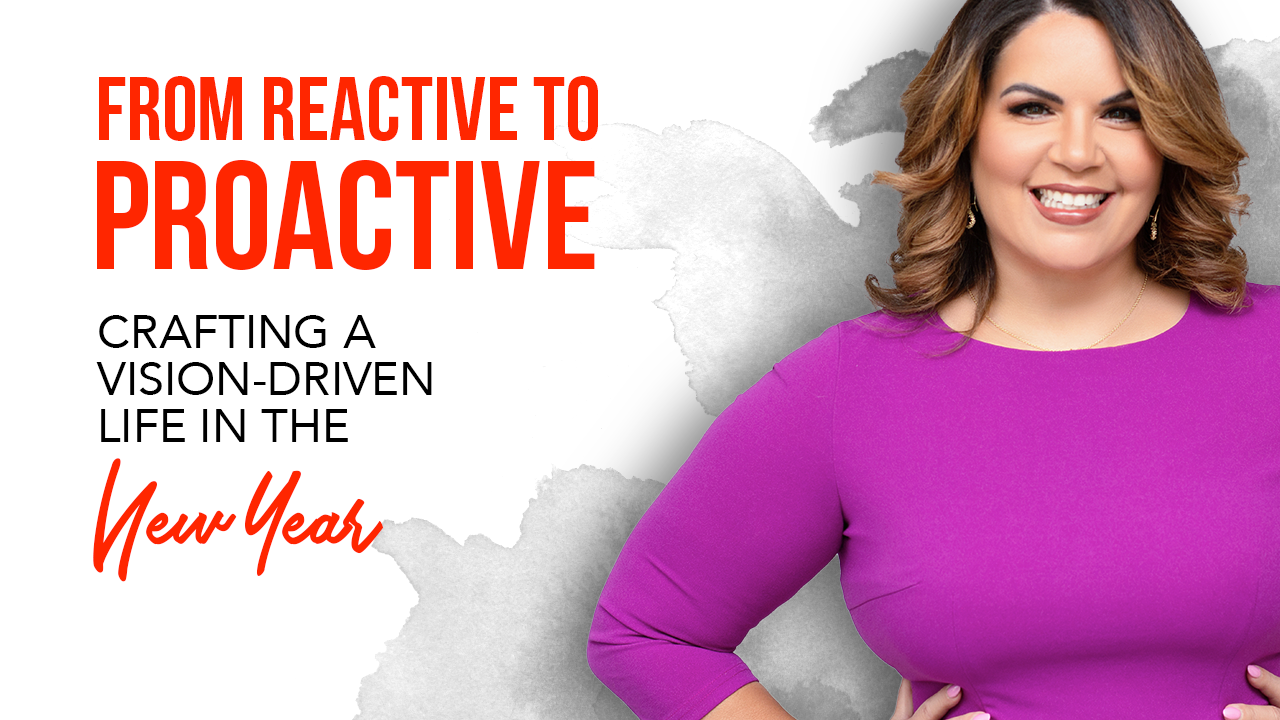[vc_row][vc_column][vc_column_text]Be honest! You can be writing all day, but you hate numbers! You see your Google Analytics, CTR %’s, Google Search Console reports and … now what? 😩
Data can come from anywhere. Insights come from intelligence.
What is the first thing that comes to your mind when the word “forensic” is mentioned? Well, most of Gen X and millennials associate it with crime investigation. Watch one episode of a crime television show, and you will hear the word forensics mentioned after every minute. However, the word has a broader use than you might have imagined.
This is particularly true when it comes to the marketing field. Marketing these days has become a never-ending game of one-upping the competition. Whether it’s inbound marketing or outbound marketing, or email marketing, you never know who is going to best you in the days to come.
Because of this uncertainty, people often contemplate giving up. In several cases, people are unable to determine a scalable, steady, predictable, and logical path. Lack of clarity drives them insane, which leads them to make wild and risky decisions. Luckily, forensic marketing is there to save the day. In simple words, forensic marketing provides you the cold hard evidence that pinpoints which of your marketing efforts is not working.
However, forensics is not just restricted to marketing or criminology. It is also present in various other fields’ kike law, medicine, and accounting.
Marketing Needs Forensics
Let us briefly discuss the role of forensics in these fields:
Forensic Accounting: This form of forensics helps to find out accounting anomalies in standard practices and records
Forensic Medicine: helps to point out inconsistencies in medicines and treatments that patients go through. The discrepancies are gauged through patient response.
Forensic Attorneys: The job of a forensic attorney is supporting and concluding court cases by closing the gap between law and science. Attorneys thoroughly go through crime scene evidence that might help them to conclude the situation.
So, have you noticed what forensics in any field have in common? Well, they all help to point out irregularities and inconsistencies. Imagine incorporating forensics for your company’s marketing efforts. If done right, the only thing stopping you from achieving your goal would be an act of God.
Is Forensic Marketing A Real Thing?
Forensic marketing is as real as it gets. Think of it as data mining. Tons of companies use data mining to extract useful information out of raw data. They use software that helps them see specific patterns, which offer them a lot of helpful information about customers. It allows businesses to come up with efficient marketing strategies, which decreases their costs and increases their sales. In short, the process of forensic marketing consists of several steps.
Finding the right balance for your marketing strategy is the ultimate goal of forensic marketing. Utilizing forensic marketing will provide you with scalability and predictability that will lead to the massive growth of revenue.
Another aspect of forensic marketing is being aware of the next step that you will take after identifying issues, weaknesses, and challenges. If you are unable to rectify a situation, chances are that future outcomes will become even worse. It does not matter whether you are a VP of marketing or Chief executive officer; your ultimate goal should be to identify and fix weaknesses and optimize your client’s marketing efforts.
Reviewing your current marketing activities and sales process helps you to make the necessary amendments to achieve your targets.
The World through a Forensic Microscope
As I have already discussed earlier, most professional services have a forensic component these days. Be it tax specialists, lawyers, or accountants; you will find some level of forensics in their specialties. Uncovering what has unraveled is the primary purpose of using a forensic approach in marketing. Much like crime scene investigations, the forensic marketing microscope helps to find the culprit behind your company’s revenue and leads or lack thereof.
Assessing current marketing through forensics is quite simple. Here is what happens:
Your business (or your client’s business) provides a solution for a group of people. That is your target audience. You want to get visible in front of that group so they know about your solution. But you also want to influence them so they become your client. This is where forensics comes handy. It’s all about turning insights into actionable steps so the business can achieve its goals.

Marketers Have a Hard Time Proving the ROI from Their Digital Marketing Efforts
Most marketers have quite a difficult time when it comes to proving the returns from their digital marketing efforts, be it from content marketing or social media marketing. Being a marketer, I have noticed that we often juggle heaps of projects. So much so, that many marketers, later on, find themselves in a turbulent whirlwind that never lets them do their jobs properly. The result is the inability to report on ROI of all of the marketing responsibilities they take on. Finding accurate data and presenting it becomes increasingly hard.
According to a reputable survey, marketers from various countries were asked what their biggest challenge is when they try to attempt their marketing’s ROI. The vast majority of these marketers reported that attributing to their digital marketing ROI was most problematic for them. A significant reason why proving ROI for digital marketing, especially when it comes to content production, is quite tough is because most analytics platforms base their reports by, on page SEO, local SEO, paid searches, email, social media insights, ad performance, and other channels. Surprisingly, even sophisticated attribution models do not tell whether the money you spend on your marketing efforts was worth it or not.
Despite that, there are a few things you can do to improve your efforts. First of all, use a top website analytics platform like Google Analytics for reporting your campaigns with accuracy. In addition, use tracking codes for all marketing activities that make use of your content. UTM codes are a good example of that. Furthermore, report your content by using a custom dashboard.
By having these, you will find It easier to report the impact of each of your marketing efforts. It will also help you combine your financial and campaign reports. It is not as these challenges cannot be conquered. However, you have to step back from the production lime, find suitable key performance indicators for the business, and use tools that match your needs. Sure, you might find it painstaking in the beginning; however, with time, you will see a significant improvement in proving ROI on your digital activities.
Organizations Want to See Conversion Rates and Real Sales, Not Just Clicks
Conversion rates are, without a doubt, the most crucial digital media and digital marketing metric. All of your online marketing efforts, especially content marketing, aim at a single purpose, and that is to convert your website visitors into loyal customers.
Conversion rates include more than just sales. Free quote requests by visitors, calls, and filling contract forms also are considered as conversions. Any action that increases the chances of your business making a sale can be referred to as a conversion.
I have seen quite a lot of people become overwhelmed by metrics in their early digital marketing days. You should always watch click-through rates and CPC while keeping return on investment in mind. Do not make the mistake of diverting all of your attention to clicks. It is a recipe for disaster. Organizations care more about real sales and conversion rates.
If you haven’t done it yet, before moving forward with your content marketing plan, tracking your entire sales process is a must. Facebook provides a great feature to track clicks and actions with Pixel Event Setup Tool. You can use it to track your blog and call to actions, for example. This will be the only way for you to show that your content marketing is turning into real users.
Importance of Measuring Conversions From Your Content Marketing
If it is not abundantly clear by now, improving conversion rates is the cheapest possible way to improve profits from your content marketing efforts.
If this was not enough, here are some more reasons that solidify the importance of conversion rates:
Conversion Rates Indicate Failure and Success
As a content marketer, you typically pay attention to keywords, keyword density, and other SEO tools that help you craft the best content marketing strategy. But your work doesn’t end there.
Besides your SEO metrics, a content marketer needs to track their conversion rates from their content marketing efforts. This is the only way you can tell if your content marketing is working.
You Save Money with Better Conversion Rates
Higher conversion rates allow you to cover a lot of ground without having a big ad budget. You can even reduce the current ad budget and use cash leftover to test new marketing tactics. Your banking account will appreciate it.
Conversion Rates Tell You About Your Readability
Readability is a major factor in online content and can greatly increase your site’s search engine optimization (SEO) levels. Readability is the practice of making your writing understandable and easy to digest for your target audience. Marketing to your audience is critically important.
If your conversions are healthy, chances are your readability is healthy as well. On the other hand, if conversion rates are not optimal, exploring readability scores is a must.
A common mistake I see is that marketers only track conversions from their sales page. However, they seem to miss other elements that are important to drive conversions for a website, such as brand authority and brand trust. How do we measure those?
Conversion Rates Are Impulsed By Trust
If your audience can relate to the content that you have created, then they are more likely to trust your brand. But that’s not enough for them to purchase from you.
“Businesses that fail to establish trust — the foundation of any relationship — will lose to businesses who can,” said SurveyMonkey CEO Zander Lurie in a statement accompanying the survey results. The survey conducted by his company found that brand trust affects the bottom line in a variety of ways.
As a forensic marketer, sometimes I need to step back from the quantitative metrics and explore deeper the qualitative ones, such as trust, empathy, relatability, approachability, charismatic. Maybe your conversions are not happening simply because the brand doesn’t inspire trust to the audience. Or it’s not delivering the information that users expect, in comparison to similar products or services.
Tips to Improve Conversion Rates
Since we have discussed why conversions are so important, let us talk about some helpful tips that could potentially boost conversion rates from your content marketing efforts.
· Be impeccable with your online presence. Users will search you! Grow your company’s social media, add a business listing, add it on google maps, provide the necessary email addresses etc. Do everything possible to attract people to Twitter, Facebook, and other accounts. Display social proof on your pages if you happen to have a decent following. Also, remember to use title tags and meta tags to improve its online presence.
· Have a clear definition of what is a conversion. Your initial goal from your content marketing is to build awareness. You need to measure your performance based on the number of users your content marketing is attracting. Optimize for traffic, engagement, and email subscribers, until you reach at least 5,000 visitors per month. Then you can optimize for sales.
· Niche! Although aiming for a wide audience is a great idea, you should also focus on the particular demographic that appreciates your product the most.
This can be confusing but trust me, it takes me seconds seeing your blind spots. That’s why you want a forensic strategist in your team!
Real Case
There was a local Tech Company that saw a noticeable decline in its sales and leads all of a sudden. This happened in late June 2019. The company got in touch with its marketing agency and asked what the problem was. The agency did not find any issues and claimed that everything was all right. They said “all you need is to increase your PPC budget”.
Tech Company agrees to boost their PPC budget to $20,000 a month. Guess what happened next? Do you think sales went up?
If your answer was no, you were right!
Things did not improve, however. In fact, they got even worse. The sales saw a massive 40 percent drop despite adding a lot of extra budget for enhancing the marketing efforts.
This is when they called me on-site to perform a Forensic Analysis for their marketing to figure out the missing pieces. They did know that something was wrong but could not figure out what it was. All their marketing agency provided was invoices and click rates, which are not enough.
Their marketing agency could not provide an explanation of why sales were not happening, simply because they were just doing 1 tactic: PPC. The center of their tactic was the money factor, instead of the user. But the client isn’t a marketer, so they don’t know what they don’t know.
From my analysis, I found critical conversion metrics that were missing- all related to their top funnel marketing. They had no content marketing strategy in place, except for the product description and call to action. I showed them their top competitors and their content marketing. We drafted a top-funnel content marketing plan that will drive them up to 40,000 new visitors – all organic. By adding organic traffic, their marketing budget went from $25,000 a month to $7,500 but now it includes content marketing, social media marketing, and PPC. We are now monitoring sales patterns so we can craft advertising campaigns, based on what their users want!
Our 6 Steps of Forensic Marketing Consulting
We are highly proficient when it comes to forensic marketing, whether its for a local business or for a wider one. Our efforts have provided first-rate marketing solutions for various renowned clients. Here are our 6 steps of forensic marketing consultancy.
Before Taking a Case – Assessment
The first thing that we offer is a marketing health check. It is completely complimentary. I was very adamant of making it part of our assessment because it was a system I had since my law firm days. I do not take cases that are hopeless and unwinnable. It saves time and money for both parties. I have turned down cases numerous times, as I know how much clients appreciate honest pros.
Our forensic consultancy will help you with coming up with a brand development strategy. We use web analytics tools, determine local search ranking, along with other ranking factors to see how fat we can take your brand. It will also help you to find opportunities to take your optimization to the next level. Our thousand-dollar worth assessment is free and takes you 45 seconds to complete the form. Then from our end, about 3 hours. This phase is complimentary.
Structure Our Case: Low Hanging Fruits First
After completing our assessment, we come up with a plan of action, along with projected results and budget. The most common deliverables are optimized landing pages, web pages, and competitor keyword analysis. With these, clients see results within a few weeks.
Once the client officially hires us, we then perform deep-dive research to find the areas of opportunities where our clients can see results in the shortest amount of time. This takes around 5 days. And when the client is a marketing agency the process is even faster.
Forensic Audit
It would be fair to say that forensic auditing is probably the most essential part of our job. Our clients provide us analytics, and leave the rest to us. As we always say, data can come from anywhere, insights come from intelligence.
UX Research
We perform a thorough UX research to see whether the online experience you are providing your customers is worthwhile or not. We also conduct UX mapping to improve your digital marketing efforts.
Marketing Strategy
Once we have enough data to establish patterns (30-60 days) we make a holistic strategy for optimal marketing. We then create a marketing calendar with realistic goals in mind. We also make sure that our implementation is bulletproof and free from cracks.
Support (911 Style)
We set up our projects with regular alerts to notify us if there are any errors. We get to work as soon as there is a notification. You can contact us or message us at any time you want, as maintaining transparency is of utmost importance to us. It helps to establish trust with customers and improves communication.
Book Your Forensic Assessment Call Today (Free)
[/vc_column_text][/vc_column][/vc_row][vc_row][vc_column][vc_masonry_grid post_type=”post” max_items=”10″ grid_id=”vc_gid:1576007971136-5079a74c-2753-10″ taxonomies=”25, 82, 338″][/vc_column][/vc_row]










